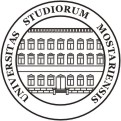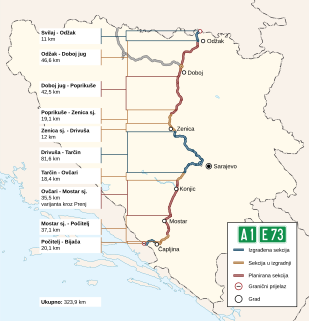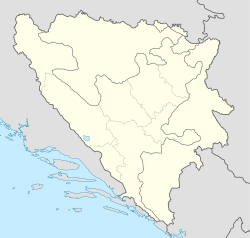
The Herzegovina-Neretva Canton is one of 10 cantons of the Federation of Bosnia and Herzegovina in Bosnia and Herzegovina.

Dragan Čović is a Bosnian Croat politician who served as the 4th Croat member of the Presidency of Bosnia and Herzegovina from 2002 to 2005 and from 2014 to 2018. He is the current president of the Croatian Democratic Union and is a member of the national House of Peoples.

Mostar is a city and the administrative center of Herzegovina-Neretva Canton of the Federation of Bosnia and Herzegovina, an entity of Bosnia and Herzegovina.

Blaž "Baka" Slišković is a Bosnian professional football manager and former player.

The University of Mostar is the largest public university located in Mostar, Bosnia and Herzegovina.
Dominik Mandić was a Herzegovinian Croat Franciscan and historian

Ratko Perić is a prelate of the Catholic Church who served as the bishop of Mostar-Duvno and apostolic administrator of Trebinje-Mrkan from 1993 until his retirement in 2020. After his retirement in July 2020, he briefly served as the apostolic administrator of the both dioceses until the installment of his successor Petar Palić in September 2020.

The Croats of Bosnia and Herzegovina, often referred to as Bosnian Croats or Herzegovinian Croats, are the third most populous ethnic group in the country after Bosniaks and Serbs, and are one of the constitutive nations of Bosnia and Herzegovina. Croats of Bosnia and Herzegovina have made significant contributions to the culture of Bosnia and Herzegovina. Most Croats declare themselves Roman Catholics and speakers of Croatian.

Alojzije Mišić, O.F.M. was a Franciscan and prelate of the Catholic Church who served as the bishop of Mostar-Duvno and the apostolic administrator of Trebinje-Mrkan from 1912 until his death in 1942.

The A1 motorway is a motorway in Bosnia and Herzegovina that is part of the European route E73 and, together with two Croatian motorways and the Hungarian M6, will provide a modern and fast road connection from Budapest to Ploče, a seaport on the Adriatic Sea. The motorway will connect the capital Sarajevo with other large cities. It will also be the main link to Bosnia and Herzegovina from the Adriatic Sea and Central Europe.

HŠK Zrinjski Mostar is a professional football club, based in Mostar, Bosnia and Herzegovina. The club plays in the Premier League of Bosnia and Herzegovina, and has been one of the top teams in the country over the last few years.
Franciscan Province of Herzegovina of the Ascension of the Blessed Virgin Mary is a province of the Catholic religious order of the Order of Friars Minor, commonly known as Franciscans. It was established in 1843 when it seceded from the Franciscan Province of Bosna Srebrena. Its headquarters are in Mostar.

The siege of Mostar was fought during the Bosnian War first in 1992 and then again later in 1993 to 1994. Initially lasting between April 1992 and June 1992, it involved the Croatian Defence Council (HVO) and the Army of the Republic of Bosnia and Herzegovina (ARBiH) fighting against the Serb-dominated Yugoslav People's Army (JNA) after Bosnia and Herzegovina declared its independence from Yugoslavia. That phase ended in June 1992 after the success of Operation Jackal, launched by the Croatian Army (HV) and HVO. As a result of the first siege around 90,000 residents of Mostar fled and numerous religious buildings, cultural institutions, and bridges were damaged or destroyed.

Operation Jackal, also known as Operation June Dawns, was an offensive of the Bosnian War fought between a combined Croatian Army (HV) and Croatian Defence Council (HVO) army against the Army of Republika Srpska (VRS) from 7–26 June 1992. The offensive was a Croatian pre-emptive strike against the VRS, a Bosnian Serb military formed in May 1992 from Yugoslav People's Army (JNA) units that were stationed in Bosnia and Herzegovina. The HV concluded that the JNA offensive operations of April and May 1992, resulting in the capture of Kupres and much of the Neretva River valley south of Mostar, were aimed at capturing or threatening the Croatian Port of Ploče and possibly Split. To counter this threat, the Croatian leadership deployed the HV, under the command of General Janko Bobetko, to the "Southern Front" including the area in which Operation Jackal was to be conducted.
In the 1994 roadside attack on Spin magazine journalists on May Day during the Bosnian War, two journalists, Bryan Brinton and Francis William Tomasic, were killed by a landmine, and journalist and novelist William T. Vollmann was injured near Mostar in Bosnia and Herzegovina.

Petar Čule was a prelate of the Catholic Church who served as the bishop of Mostar-Duvno and of apostolic administrator of Trebinje-Mrkan from 1942 until his retirement in 1980. After his retirement, he was named titular archbishop of Giufi in present-day Tunisia. Serving as bishop during the World War II, Čule was an opponent of the Ustaše regime in the Independent State of Croatia, helping to save the persecuted Serbs and political dissidents. Imprisoned under false accusations by the communists in 1948 and released only in 1955, he was also a political victim of the communist political persecution.

Lazar Lazarević was a Herzegovinian Croat Catholic priest who served as the bishop's deputy (provicar) for the Diocese of Trebinje-Mrkan from 1867 and spiritual administrator of the Diocese of Mostar-Duvno and Trebinje-Mrkan from 1910 until 1912. He was a strong supporter of the independence of the Diocese of Trebinje-Mrkan from the administration of the neighboring dioceses.
Radoslav Glavaš was a Herzegovinian Croat Franciscan, writer and cultural worker. From 1904 he was a secretary of Bishop Paškal Buconjić of Mostar-Duvno and Trebinje-Mrkan and from 1910 he served as a general vicar the Diocese of Mostar-Duvno.
Marko Perić was a Montenegrin prelate of the Catholic Church who served as the bishop of Kotor from 1981 until 1983.














